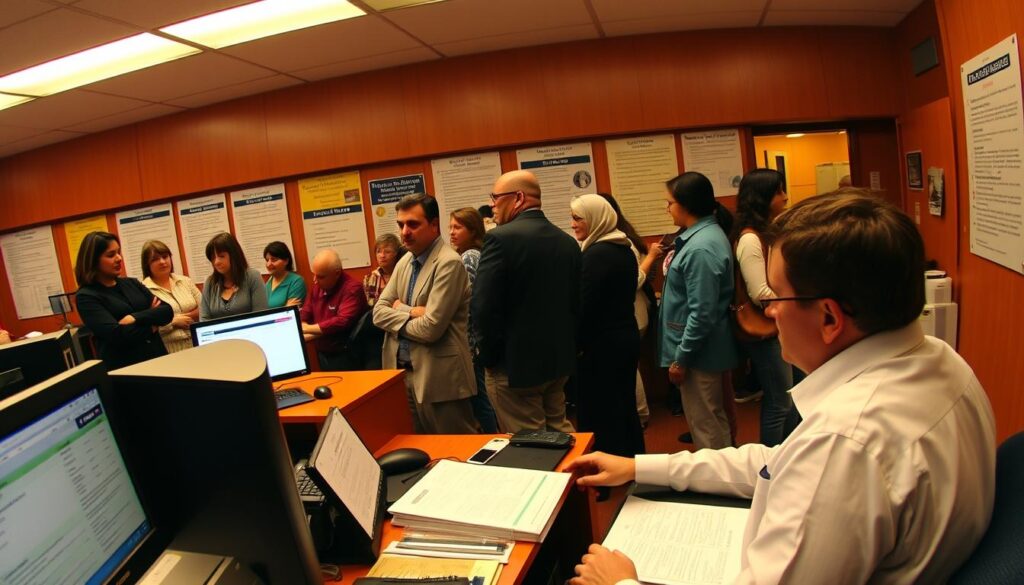Advanced Disability Benefits Estimator
Discover Your Potential Benefits
Are you curious about what disability benefits you might qualify for? Let's find out together!
Navigating the complex world of disability benefits can be overwhelming, especially for those facing health challenges that prevent them from working. At the heart of this challenge is understanding the programs available and the application process.

This comprehensive guide is designed to walk you through everything you need to know about the benefits available, eligibility requirements, and the steps involved in applying. Understanding the differences between the various programs, such as SSDI and SSI, is crucial in determining which one might be right for your situation.
By explaining the timeline for benefits, documentation requirements, and potential roadblocks, this guide aims to improve your chances of approval, whether you’re applying for the first time or appealing a denial.
Understanding Social Security Disability Programs
To support individuals with disabilities, the Social Security Administration operates two key programs: Social Security Disability Insurance (SSDI) and Supplemental Security Income (SSI). These programs have different eligibility requirements and benefits structures.
Social Security Disability Insurance (SSDI)
SSDI is designed for workers who have paid into the Social Security system through payroll taxes and have accumulated sufficient work credits. Eligibility for SSDI requires meeting the Social Security Administration’s definition of disability.
Eligibility Requirements
To qualify for SSDI, applicants must have worked recently enough and long enough to earn the required number of work credits. The number of work credits needed varies based on the applicant’s age.
Waiting Period and Exceptions
SSDI benefits have a mandatory five-month waiting period, starting from the first full month after the disability began. However, there’s an exception for individuals with amyotrophic lateral sclerosis (ALS), who are exempt from this waiting period if approved for SSDI benefits on or after July 23, 2020.
Supplemental Security Income (SSI)
SSI is a needs-based program for individuals with limited income and resources who are disabled, blind, or 65 or older. Eligibility for SSI is not dependent on work history but rather on financial need and meeting the disability criteria.
Eligibility Criteria
To be eligible for SSI, applicants must have limited income and resources. The program has strict income and resource limits that determine eligibility.
Income and Resource Limits
| Category | SSI Eligibility Limit | SSDI Consideration |
|---|---|---|
| Income Limit | Varied by state and individual circumstances | Not applicable |
| Resource Limit | $2,000 for individuals, $3,000 for couples | Not applicable |
Some states provide supplemental payments in addition to the federal SSI benefit to help recipients meet their basic needs.
How to Apply for Social Security Disability Benefits Help
Navigating the application process for Social Security Disability Benefits requires careful planning and preparation. Understanding the steps involved and the information required can significantly streamline the process.
When to Start the Application Process
Timing is crucial when applying for Social Security disability benefits. Experts recommend starting the application process as soon as you become disabled. This is because SSDI has a five-month waiting period, and the approval process can take several months or even years in some cases.
Required Documentation and Information
Before starting your application, gather essential documentation including medical records, work history, tax information, and personal identification documents to streamline the process. The Social Security Administration offers a helpful Disability Starter Kit that outlines exactly what information and documentation you’ll need to complete your application successfully.
Application Methods
You have three primary methods to apply for disability benefits: online through the SSA website, by phone with a representative, or in-person at your local Social Security office.
Online Application
The online application is often the most convenient option, allowing you to save your progress and complete the forms at your own pace from the comfort of your home.
Phone Application
Phone applications can be initiated by calling the Social Security toll-free number (1-800-772-1213), where representatives can guide you through the process or schedule an appointment.
In-Person Application
In-person applications at your local Social Security office require an appointment in most cases, which can be scheduled by phone. Regardless of which application method you choose, being thoroughly prepared with all required documentation will help avoid delays in processing your claim.
Navigating the Disability Determination Process
Understanding the disability determination process is essential for navigating the complexities of Social Security Disability benefits. This process involves several steps that determine whether an individual’s condition qualifies them for benefits under the Social Security Disability Insurance (SSDI) or Supplemental Security Income (SSI) programs.
Medical Review Process
The medical review process is a critical component of the disability determination process. It involves a five-step sequential evaluation that assesses the applicant’s current work activity, the severity of their condition, whether their condition meets or equals a listing in the SSA’s “Blue Book,” their ability to perform past work, and their ability to perform any work in the national economy.
| Evaluation Step | Description |
|---|---|
| 1. Current Work Activity | Assessing if the applicant is currently working and if their earnings exceed a certain threshold. |
| 2. Severity of Condition | Evaluating the medical severity of the applicant’s condition. |
| 3. Listing in the “Blue Book” | Determining if the condition meets or equals a listing in the SSA’s “Blue Book.” |
| 4. Ability to Perform Past Work | Assessing if the applicant can perform their past relevant work. |
| 5. Ability to Perform Any Work | Evaluating if the applicant can perform any work in the national economy. |
Compassionate Allowances Program
For individuals with severe conditions, the Compassionate Allowances (CAL) program can significantly expedite the approval process. CAL covers approximately 250 conditions, including specific cancers, adult brain disorders, and rare disorders that affect children, allowing these cases to be processed with minimal medical documentation.

What to Do If Your Application Is Denied
If your application is denied, which happens to approximately 65% of initial applications, you have the right to appeal. The appeal process involves four levels: reconsideration, hearing by an administrative law judge, review by the Appeals Council, and Federal Court review.
Appeal Process Steps
The appeal process is designed to provide a thorough review of the initial determination. It’s crucial to understand the steps involved and the timeframe for filing an appeal.
Continuing Benefits During Appeal
During the appeal process, you may be able to continue receiving benefits if you request continuation within 10 days of receiving your denial notice.
Getting Help with Your Application
Professional representation can significantly improve your chances during the application or appeal process. Options include attorneys, non-attorney representatives, or advocates who specialize in Social Security disability claims.
Appointing a Representative
Appointing a representative can help navigate the complexities of the application and appeal process. Many representatives work on a contingency basis, meaning they only collect a fee if your claim is approved.
Free Legal Resources
For those who cannot afford representation, free or low-cost legal resources are available through legal aid societies, law school clinics, and pro bono programs.
Conclusion: Managing Your Benefits After Approval
To ensure continuous access to the support you need, it’s vital to understand how to manage your Social Security Disability benefits after approval. Recipients of Social Security Disability benefits must report certain life changes to the SSA, including changes in medical condition, work activity, income, living arrangements, and marital status.
The SSA conducts periodic continuing disability reviews (CDRs) to verify that beneficiaries still meet the medical requirements for disability benefits. Understanding how other benefits, such as Medicare, Medicaid, workers’ compensation, or private disability insurance interact with Social Security disability benefits is essential for comprehensive financial planning.
Both SSDI and SSI have work incentive programs designed to help beneficiaries transition back to employment when possible. For instance, SSDI offers a Trial Work Period (TWP) that allows recipients to test their ability to work for at least nine months while still receiving full benefits. SSI recipients who work face different rules, with benefits generally reduced by $1 for every $2 earned after an initial income exclusion.
Staying informed about your rights and responsibilities as a beneficiary through regular communication with the SSA will help ensure continuous access to the support you need while avoiding potential overpayments or benefit interruptions. Working with a benefits counselor through the Work Incentives Planning and Assistance (WIPA) program can also provide valuable guidance on managing your benefits.
